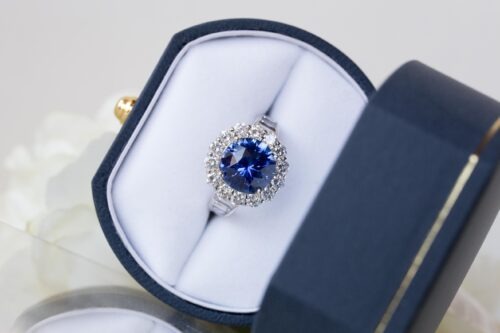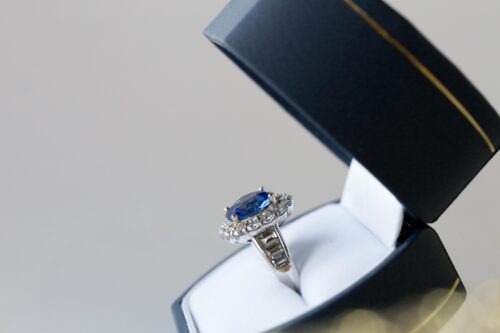September is here! That means it’s time for pumpkin spice, football, and you guessed it…Sapphire! One of the most popular colored stones on the market and a growing trend in bridal jewelry, sapphire of all colors is a fantastic choice for your next ring, pendant, bracelet, or earrings.
The sapphires you’ve probably seen the most of are a medium-dark blue, but sapphire can actually come in every color of the rainbow. We commonly stock yellow, pink, purple, and green sapphire at our store. Sapphire is more durable than most other gemstones, and it is a 9 out of 10 on the hardness scale, making it ideal for everyday wear. For more information about sapphires durability, check out this blog post: https://www.hperryjewelers.com/best-colored-stones-for-engagement-rings/
Here are some questions we commonly get about sapphire:
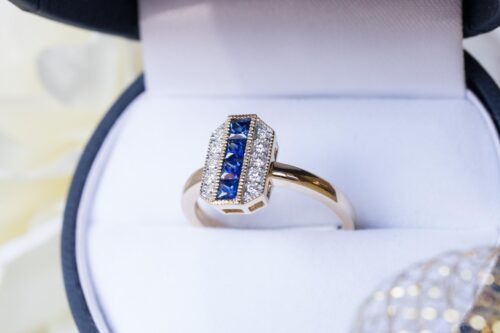
Is sapphire treated?
The answer to that is almost always “yes.” It’s hard to say for sure, but experts estimate that at least 95% of blue sapphires are treated. Is this a bad thing? No, not usually. Sapphires are often treated with harmless techniques such as heating to control their color. This helps make the beautiful colors of sapphire more affordable while maintaining it’s stability and durability.
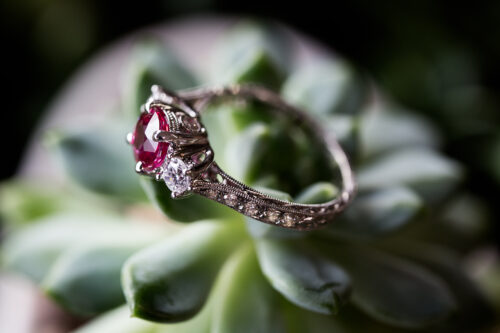
Why is sapphire almost never red?
Occasionally, we’ll stumble across a lab report for a “red sapphire.” The term “sapphire” usually refers to every color of corundum (corundum is a type of mineral) except red because red corundum is actually called “ruby.” To oversimplify the concept, sapphire and ruby are pretty much the same thing except for the color.
Would sapphire be a good alternative to diamond for an engagement ring?
Absolutely!
It’s hardness and toughness make it ideal for everyday wear, and with sapphire you have so many options for color. Some sapphires can even be multi-colored, which make for very unique rings.
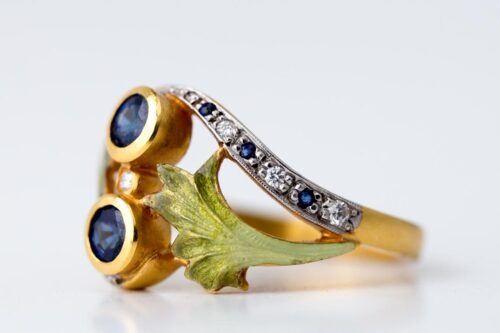
Where does sapphire come from?
Sapphire comes from all over the globe. In fact, we even have a sapphire mine in the US! Montana sapphires are known for their unique teal color, and they’re growing more popular in engagement ring styles. Most of the time, however, we don’t know exactly where individual sapphires come from. Some of the countries where sapphires come from don’t regulate or report trading practices, making it pretty much impossible to keep track of export numbers.
What are “synthetic” or “lab-created” sapphires?
Synthetic and lab-created are synonymous, not to be confused with “imitation.”
“Lab-created” sapphires are chemically and optically the same as natural sapphire. “Imitation” sapphires may look similar but have different characteristic properties. Lab-created sapphires are an excellent alternative to natural sapphire if you are looking for something more affordable and still tough enough for everyday wear.
Looking for a sapphire piece to add to your collection? Have questions about a sapphire you already have? Come by our store and speak to one of our qualified jewelry professionals!
If you have a sapphire piece you are needing appraised, check out this blog post:
https://www.hperryjewelers.com/do-i-need-an-appraisal/

Jordan Rayne
GIA Diamonds Graduate, GIA AJP
Designer and Consultant for HPerry Jewelers since 2013

